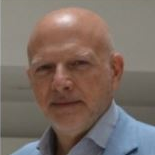Beyond the Recycling Economy: The E-Waste Reverse Supply Chain in the Transition to the Circular Economy Perspective
A special issue of Sustainability (ISSN 2071-1050). This special issue belongs to the section "Waste and Recycling".
Deadline for manuscript submissions: closed (1 June 2022) | Viewed by 4921
Special Issue Editors
Interests: entrepreneurship; reverse supply chain; circular economy; sustainability
Special Issues, Collections and Topics in MDPI journals
Interests: circular economy; sustainability; construction and demolition waste life cycle; WEEE life cycle; environmental and quality certification; life cycle sustainability assessment methods; sustainability of natural solutions (urban forestry projects)
Interests: reverse supply chain; network design; WEEE management
Interests: circular economy; WEEE management processes; sustainability; innovation, entrepreneurship, digital technologies
Special Issues, Collections and Topics in MDPI journals
Interests: circular economy; policy making; sustainable development; WEEE management cycle
Special Issue Information
Dear Colleagues,
Roughly 20% of global Electronic and Electrical Equipment (EEE) ends up being recycled at the end of its lifecycle, and much of the rest ends up in a landfill as waste (known as WEEE or e-waste) (Baldè et al. 2017). This appears to be increasingly relevant if we consider the strong increase in e-waste generated (+21% over 2015-2019 on a global basis, with a record 53.6 mln tons in 2019, while another 81 tons is expected by 2030) as a result of the continuous rise in the volume of EEE placed on the market (+25% from 2013 to 2017 in the EU, amounting to over +1.8 mln tons of annual EEE put to market) (Global E-waste Monitor 2020; Eurostat). Unprocessed WEEE often ends up in landfills in the Global South and causes serious harm to the surrounding eco-systems and human populations, including bad labor conditions and many toxins entering the local groundwater (Awasthi, Li, 2017a, b). This problem is particularly relevant if we consider that 71% of countries worldwide are currently adopting policies or regulations on e-waste management (Global E-waste Monitor 2020). There is an increased awareness that to reduce the amount of WEEE we need to reduce, reuse, repair, remanufacture, repurpose, etc. global EEE, in line with the EU waste hierarchy (Directive 2008/98/EC), its evolution (zerowasteeurope.eu, 2019), and the principles of Circular Economy (CE), while also limiting the amount of EEE put to market and thus limit the amount ending up in landfills. In the transition to a circular economy, recycling should be considered the last option among the list of waste management options (but is still important) (Isernia, et al. 2019). Indeed, recycling WEEE is a very energy-intensive process, requires costly high-end facilities, and is not yet able to regain all materials embedded in WEEE (Ghisellini et al., 2016). Although recycling is better than landfilling, it is not capable of rendering the CE a valid approach aimed to decouple value creation from resource consumption (Bressanelli et al., 2020; Reike et al. 2018), since it only closes the loop between post-use and production stages (Bocken et al., 2016). Current case studies in the WEEE sector (Bressanelli et al., 2020; González et al., 2017) highlight the environmental and socio-economic benefits of the previously listed alternatives to recycling and of the extension of the EEE life cycle in terms of reduction of resource consumption and waste generation (www.astelav.com/it/progetto-ri-generation/; González et al., 2017).
As a tool for sustainable development, actions like repairing and remanufacturing can be done by high-skilled seniors workers and are often successfully done in tandem with re=education projects for unemployed people, fulfilling a socio-economic need. Furthermore, these options lower the economic and environmental footprints of new products. As Stahel (1981) said: “Do not repair, what is not broken; do not remanufacture something that can be repaired; do not recycle a product that can be remanufactured; replace or treat only the smallest possible part in order to maintain the existing economic value”. An additional contribution in this perspective can be provided by other options (reduce, refuse, rethink), which involve citizens’ and producers’ habits and behaviors and call for a rethinking of consumption models, product design, and business models to maintain the existing economic value of goods.
However, many barriers still exist to enable these alternative WEEE management strategies. Information is often not available, nor are spare parts, disassembly is increasingly difficult, and consumers often do not know what their options are. In fact, the EEE repair industry is shrinking in developed countries (McCollough, 2009; Bovea et al., 2017; Sabbaghi et al., 2016, 2017). The supply of information and spare parts over long life cycles of products, distributed facilities that can disassemble products, the right to repair and eco-design regulation, and a decision-making system to optimally decide on an end-of-life strategy for products call for a complex and integrated closed-loop supply chain from design to reuse.
So far, limited attention in the extant literature has been devoted to strategies, initiatives, and policy measures to go beyond the limits of the recycling economy (Islam and Huda 2018b; Ismail and Hanafiah 2019).
Therefore, the purpose of this Special Issue is to fill this gap by providing theoretical, conceptual, and empirical studies on CE approaches to WEEE management, measures, and initiatives aimed at reducing WEEE generation through the involvement of different stakeholders (e.g., consumer, producers, regulators, policymakers, service providers, and others). Specifically, the scope of this Special Issue is related to identifying those strategies, approaches, and methods employed to properly prevent or reduce the e-waste generation that mainly involve (W)EEE management strategies to keep products/parts in circulation. We also welcome papers that identify problems with the growing EEE waste stream, especially research from the Global South.
Possible topics include, but are not limited, to the following:
- Strategies, methods, and approaches to prevent e-waste generation
- Role of stakeholders in the prevention of e-waste generation
- Development of new consumption models and consumers’ habits
- CE approaches and strategies for e-waste reduction
- Role of technologies in e-waste prevention
- Eco- and green design strategies
- Technologies and practices for WEEE recovery and treatment improvements
- Role of WEEE closed-loop supply chain and reverse logistics
- Policies and practices aimed at reducing the EEE waste stream
- CE-oriented Business models for the extension of EEE life cycle
- Role of regulation about the right to repair and eco-design
Main References
Baldé, C.P., Forti, V., Gray, V., Kuehr, R., Stegmann, P., 2017. The global e-waste monitor 2017. United Nations University.
Bocken, N.M.P., de Pauw, I., Bakker, C., van der Grinten, B., 2016. Product design and business model strategies for a circular economy. J. Indu. Prod. Eng. 33 (5), 308e320. https://0-doi-org.brum.beds.ac.uk/10.1080/21681015.2016.1172124.
Bovea, M. D., Ibáñez-Forés, V., Pérez-Belis, V., Quemades-Beltrán, P. 2016. Potential reuse of small household waste electrical and electronic equipment: methodology and case study. Waste Management, 53, 204-217.
Bressanelli, GM, Saccani, N., Pigosso, D. C. A., Perona, M., 2020a. Circular Economy in the WEEE industry: a systematic literature review and a research agenda. Sustainable Production and Consumption 23, 174-188.
Bressanelli, GM, Saccani, N., Perona, M., 2020b. Circular business models in selected geographical contexts. An analysis of two cases. In: The Routledge Handbook of Waste, Resources and the Circular Economy. Routledge International Handbooks, DOI: 10.4324/9780429346347-42
Ghisellini, P., Cialani, C., Ulgiati, S., 2016. A review on circular economy: the expected transition to a bilance interplay of environmental and economic systems. Journal of Cleaner Production 114, 11-32.
Global E-waste Monitor, 2020, http://ewastemonitor.info/
González, X.M., Rodríguez, M., Pena-Boquete, Y., 2017. The social benefits of WEEE re-use schemes. A cost benefit analysis for PCs in Spain. Waste Manag. 64, 202-213. https://0-doi-org.brum.beds.ac.uk/10.1016/j.wasman.2017.03.009.
Isernia, R., Passaro, R., Quinto, I., & Thomas, A. (2019). The reverse supply chain of the e-waste management processes in a circular economy framework: Evidence from Italy. Sustainability, 11(8), 2430.
Islam, Md T., Huda, N., 2020. Reshaping WEEE management in Australia: An investigation on the untapped WEEE products. Journal of Cleaner Production 119, 119496.
Ismail, Hanafiah, M. M., 2019. Discovering opportunities to meet the challenges of an effective waste electrical and electronic equipment recycling system in Malaysia. Journal of Cleaner Production 238, 117927.
McCollough, J. 2009. Factors impacting the demand for repair services of household products: the disappearing repair trades and the throwaway society. International Journal of Consumer Studies, 33(6), 619-626.
Reike, D., Vermeulen, W.J. V, Witjes, S., 2018. New or Refurbished as CE 3.0? – Exploring Controversies in the Conceptualization of the Circular Economy through a focus on History and Resource Value Retention Options. Resource, Conservation & Recycling 135, 246-264. https://0-doi-org.brum.beds.ac.uk/10.1016/j.resconrec.2017.08.027
Sabbaghi, M., Esmaeilian, B., Cade, W., Wiens, K., Behdad, S., 2016. Business outcomes of product repairability: A survey-based study of consumer repair experiences. Resource Conservation & Recycling 109, 114–122.
Sabbaghi, M., W. Cade, S. Behdad, and A.M. Bisantz. 2017. “The Current Status of the Consumer Electronics Repair Industry in the U.S.: A Survey-Based Study.” Resources, Conservation and Recycling 116: 137–51. https://0-doi-org.brum.beds.ac.uk/10.1016/j.resconrec.2016.09.013.
Simon J.M., A Zero Waste hierarchy for Europe, 2019. https://zerowasteeurope.eu/2019/05/a-zero-waste-hierarchy-for-europe/. Last Accessed 04/03, 2021.
Stahel, W., 1981. The product-life factor. In: Grinton Orr, S. (Ed.), An Inquiry into the Nature of Sustainable Societies: the Role of the Private Sector. HARC, Houston, TX, pp. 72-96
UE, 2008, Directive 2008/98/EC of the European Parliament and of the Council of 19 November 2008 on waste and repealing certain Directives (Text with EEA relevance), available at: https://eur-lex.europa.eu/legal-content/EN/TXT/?uri=CELEX:32008L0098. Last accessed: 04/03/2021.
Prof. Dr. Renato Passaro
Dr. Patrizia Ghisellini
Dr. Carmela Piccolo
Dr. Ivana Quinto
Guest Editors
Mr. Sven Kevin van Langen
Assistant Guest Editor
Manuscript Submission Information
Manuscripts should be submitted online at www.mdpi.com by registering and logging in to this website. Once you are registered, click here to go to the submission form. Manuscripts can be submitted until the deadline. All submissions that pass pre-check are peer-reviewed. Accepted papers will be published continuously in the journal (as soon as accepted) and will be listed together on the special issue website. Research articles, review articles as well as short communications are invited. For planned papers, a title and short abstract (about 100 words) can be sent to the Editorial Office for announcement on this website.
Submitted manuscripts should not have been published previously, nor be under consideration for publication elsewhere (except conference proceedings papers). All manuscripts are thoroughly refereed through a single-blind peer-review process. A guide for authors and other relevant information for submission of manuscripts is available on the Instructions for Authors page. Sustainability is an international peer-reviewed open access semimonthly journal published by MDPI.
Please visit the Instructions for Authors page before submitting a manuscript. The Article Processing Charge (APC) for publication in this open access journal is 2400 CHF (Swiss Francs). Submitted papers should be well formatted and use good English. Authors may use MDPI's English editing service prior to publication or during author revisions.
Keywords
- waste electrical and electronic equipment
- WEEE
- circular economy
- e-waste
- waste hierarchy
- reverse supply chain management
- closed-loop supply chain
- long life extension
- appliances
- repair
- recycle
- remanufacture
- reduce








